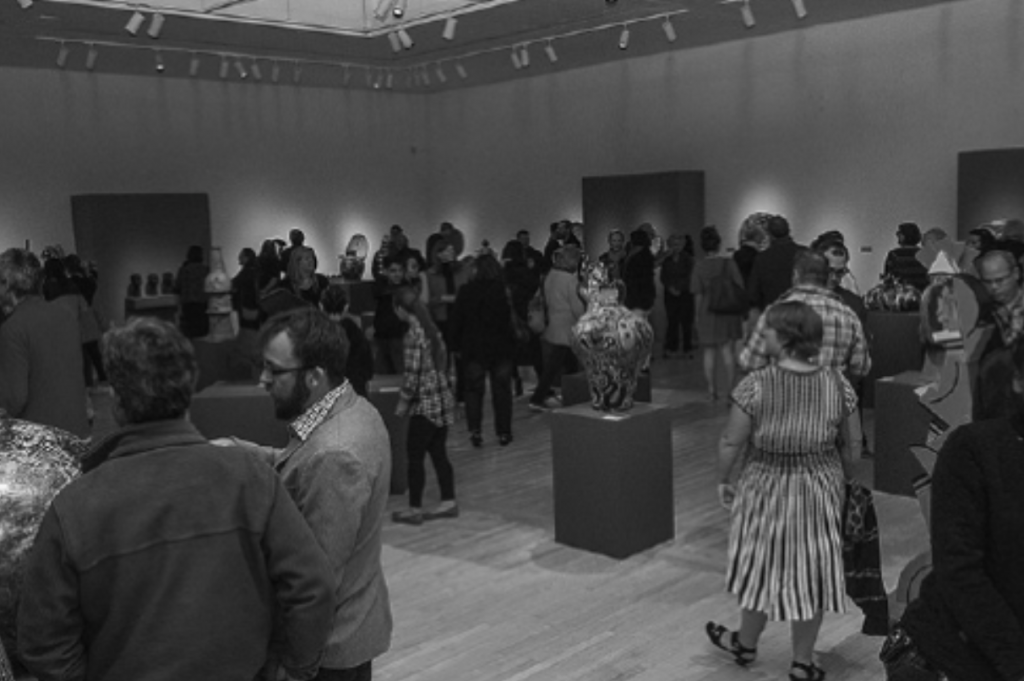By Ali Bush ’19
Music Columnist
For the past 75 years, the Williamson Gallery (tucked away behind Baxter) has been putting on a ceramic show that highlights a diverse collection of objects made from clay. Although many students I’ve interacted with are unaware of this proud tradition, the show still brought hundreds of visitors to campus when it opened in early February. As the longest running ceramic exhibition in America, the Ceramic Annual reminds viewers that the medium of ceramics is not only thriving, but a constantly evolving and expanding its possibilities.
Upon entering the Williamson gallery, there is little guiding information or wall text other than copious thanks to donors and a quote about from the show’s main donor, Mr. Fred Marer. His quote explains that he collected ceramics until his home became an obstacle course of pots and sculpture, and he donated much of this collection to Scripps. The obstacle course that Mr. Marer mentions inspires the layout of the show, as there is no clear path for visitors to choose, but simply a meandering treasure trove of ceramics.
After strolling through the gallery, it becomes clear that there is no other wall text or explanatory material about the pieces in the show. There was no mention of stylistic movements or artists’ inspiration. With only knowing the date, name of artist, and process of production, the exhibit leaves the viewer free to think of the ceramics in their own terms. In this way, visitors can find similarities among pieces and artists without being told by wall text that certain artists worked together or were part of the same movement. This lack of explanatory wall text gives the viewer more time to actually look at the piece and appreciate all of its details. After personally going to many exhibitions at larger museums that are arranged chronologically and must be viewed in a certain order, it was quite freeing to simply be given a room full of treasures and the ability to interpret them for myself. This hands off curatorial approach reminds us that art is for everyone and exhibits can foster inspiration creativity without being overbearing
As for the pieces of art themselves, they range from stunning to cute. The pieces exhibited in the show exemplify the astounding diversity of Scripps’s ceramic collection and the seemingly endless possibilities that could be achieved with the medium of clay. From completely abstract geometric sculptures to vases with figurative scenes on them, the exhibition proves that the medium of clay is truly versatile for an artist. Pieces by artists like John Mason and Paul Solder appeared scorched until they were black and had jagged edges where one could clearly see where the artist had quickly sliced the wet clay. Many other pieces by artists like, had impeccable smooth and glistening surfaces, with astonishing symmetry and clean edges. My personal favorite from the show was a platter shaped like a fish by Beatrice Wood. It brought a little more levity to the exhibition and reminded us that art doesn’t have to always be deadly serious. So, to all those that still think that the field of ceramics only consists of innocuous pots and vases, attend the ceramic annual and you will find an array of wacky, sophisticated, and innovative treasures.



